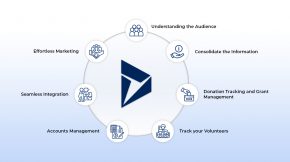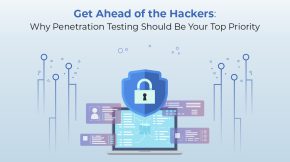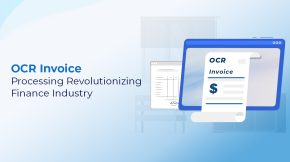How to Master Databricks Cost Optimization in 2026
Databricks gives you serious power for data work and machine learning. But that power means you need to watch your cloud spending. Your data keeps growing, and so do the jobs you run on it. If you’re not careful, costs can get out of hand fast. For companies in 2026, Databricks Cost Optimization isn’t just about paying less. It’s a smart move that helps you work faster, use resources better, and get more value from what you spend. When you mismanage it, you don’t just hurt your budget. You slow things down and make it harder to try new ideas.
How to Optimize Databricks Costs?
Good databricks cost optimization starts with seeing what’s happening. You can’t fix what you can’t see. Step one is setting up solid tracking so you know where each dollar goes. This means tagging your resources right, using the dashboards that come built in, and asking the system tables for detailed information.
Why is Tagging Crucial for Cost Attribution?
You need to know which teams or projects are using what. That’s where tagging comes in. Set up tags from day one so you can track Databricks usage back to your business units, projects, or teams. Tags show up in usage logs and on your cloud provider’s side too, which makes detailed analysis possible. At minimum, create custom tags like BusinessUnits_ and Projects. It helps to add an Environment tag as well (like development, QA, or production). This kind of detailed tagging is the foundation for any real Databricks Cost Optimization work.
How Do You Monitor Costs to Align with Expectations?
Databricks gives you several strong tools to track what you’re spending. The account console shows you cost details through ready-made dashboards. Admins can import these into any workspace that has Unity Catalog turned on. These dashboards are your main way to understand what drives your costs. You can see spending patterns and catch anything that looks off. That’s a big part of keeping Databricks Cost Optimization going over time. The default dashboards break things down by product type, SKU, and the custom tags you set up earlier. This helps you quickly spot the most expensive areas so you know where to focus.
For deeper work, you can build your own metrics with system tables. The system.billing.usage table in Unity Catalog lets you create custom reports and alerts. You can write queries to find jobs where spending changed the most. You can identify jobs that fail a lot and waste resources. Or you can track how much serverless compute is costing you. These custom metrics give you finer control for a more detailed databricks cost optimization approach.
Are You Choosing the Most Optimal Resources?
Once you can see what’s happening, make sure you’re using the right tools. Picking the wrong resources is a common way to waste money. This part of Databricks Cost Optimization means choosing the right data formats, the right type of compute, the right runtimes, and the right instance families for your specific work.
What are the Best Practices for Resource Selection?
Use Performance-Optimized Data Formats: To get the most from the platform, you should use Delta Lake for storage. It works much better than formats like Parquet or JSON. This is core to databricks performance optimization because faster queries mean shorter compute time and lower costs. Making sure your data quality is high from the start also stops you from having to reprocess things later.
Use Job Compute for Non-Interactive Workloads: A job runs code that doesn’t need someone watching it, like an ETL workload. Running these on job compute costs a lot less than on all-purpose compute. Each job can run on its own separate compute instance, which makes things more reliable too.
Use SQL Warehouses and Query Optimizers: For interactive SQL queries, a Databricks SQL warehouse gives you the best value. These engines work together with the powerful databricks cost based optimizer (CBO). The CBO looks at your data statistics and figures out the most efficient way to run your query. This cuts down on resources for complex joins and filters. Tools that make BI easier, like the AI/BI Genie, can help here too.
Use Up-to-Date Runtimes: Databricks puts out new runtimes regularly. Each new version usually has improvements that save you money. Always use the latest supported runtime for what you’re doing.
Choose the Right Instance Type: Newer cloud instances almost always give you better performance for the price. Pick the right instance family based on what your work needs. Use memory-optimized for ML, compute-optimized for streaming, or storage-optimized for analysis that needs lots of caching. Understanding your choices on platforms like Azure Databricks is key for good azure databricks cost optimization.
Evaluate Photon: Photon is a fast query engine that can speed up SQL and DataFrame API calls by a lot. When things run faster, you often save a lot of money. So look at jobs you run regularly and see if they’d be cheaper with Photon turned on.
How Can You Dynamically Allocate Your Resources?
Fixed infrastructure doesn’t make sense anymore. In the cloud, you should match resources to what your work actually needs right now. This stops you from having too little (which slows things down) or too much (which wastes money). Here are some important databricks cost optimization techniques to help with this.
What are the Key Features for Dynamic Allocation?
Auto-Scaling Compute: With autoscaling, Databricks moves workers around based on what your job is doing. It adds workers when you need heavy computation and removes them when you don’t. This works way better than a cluster that stays the same size.
Auto-Termination: Set up auto-termination for all interactive compute resources. After they sit idle for a while (like 60 minutes), they shut down on their own. This stops you from paying for time when nothing’s happening. It’s one of the easiest and best things you can do for Databricks Cost Optimization.
Compute Policies: Policies let you enforce rules about costs. You can make sure autoscaling is on with a minimum number of workers. You can require auto-termination. And you can limit people to cost-efficient VM instances. This is a strong tool for keeping things under control.
How Can You Design More Cost-Effective Workloads?
Beyond picking and sizing resources, how you design your work matters a lot for Databricks Cost Optimization. Smart planning can cut way down on what you need to get the job done.
What Design Patterns Should You Consider?
Balance Always-On vs. Triggered Streaming: Not every streaming job needs to run all day, every day. If you just need fresh data every few hours, you can use Structured Streaming with the AvailableNow trigger. This runs the pipeline bit by bit as a batch job, which saves you a lot. Thinking about different Databricks use cases helps you pick the right pattern.
Balance On-Demand vs. Spot Instances: Spot instances use extra cloud capacity that costs way less. They’re great for work that can handle being interrupted. For reliability, it’s smart to use an on-demand instance for the Spark driver and spot instances for worker nodes. Good Databricks integrations with cloud provider APIs can help you manage spot instances without extra effort.
Leverage Delta Lake Features: A big part of databricks optimization is using its built-in features well. For example, you can use the databricks optimize command with Z-ordering on your Delta tables. This puts related information in the same files, which makes queries much faster and cuts down on compute use.
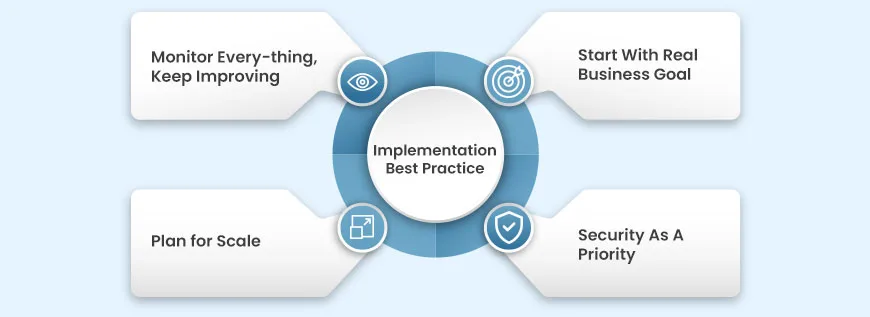 Why is Expert Guidance Crucial for Optimization?
Why is Expert Guidance Crucial for Optimization?
Databricks gives you lots of tools for cutting costs, but using them well takes real expertise. The platform is complex. Getting the best setup often depends on how your workload type, data design, and cloud setup all work together. Without expert help, teams can spend months just trying things out. Experts can also bring in advanced ideas like databricks predictive optimization, where machine learning models guess what resources you’ll need and adjust things ahead of time.
Working with people who know Databricks consulting means you’re using best practices from day one. Certified pros understand the details of cluster setup. They can apply specific azure databricks cost optimizations that fit your cloud setup. The benefits of working with a certified Databricks partner go beyond the first setup. They give you ongoing help to make sure your platform grows with your business and keeps delivering value with a better ROI.
How Beyond Key Helps You Succeed with Databricks
As certified Databricks Partners, Beyond Key gives you complete consulting to get the most from your data platform and reach your Databricks Cost Optimization goals. Our team helps you build solid ETL pipelines, put ML models into production, and connect Databricks with your cloud setup (AWS, Azure, or GCP). We’ve been honored as an Inc. Power Partner and a Great Place to Work®. We deliver solutions made for you that work well, cost less, and drive real results for your business.
Conclusion
Real Databricks Cost Optimization is something you keep working on. You monitor, you pick the right resources, and you design smart workloads. When you follow these practices, you build a data platform that’s powerful and also sustainable and efficient with money.
Frequently Asked Questions
1. What is the difference between job compute and all-purpose compute?
Job compute is built for running automated work that doesn’t need someone watching, like ETL pipelines. It costs less than all-purpose compute. All-purpose compute is for interactive analysis and development in notebooks. Using job compute for scheduled production jobs is a main way to save money. It keeps workloads separate and gives you a better price for automated tasks, which is important for any databricks cost optimization techniques you use.
2. How does Delta Lake contribute to cost optimization?
Delta Lake makes storage and queries work better, which cuts compute costs. Features like data skipping, Z-ordering, and file compaction (putting small files into bigger ones) reduce how much data gets scanned during a query. This makes queries run faster, which means shorter cluster runtimes. Its ACID transactions and schema enforcement also make data more reliable. You spend less time and money cleaning up bad data and reprocessing things.
3. When should I avoid using spot instances?
Don’t use spot instances for time-sensitive or critical work where interruptions aren’t okay. This includes real-time streaming or transactional systems that need to stay up all the time. Spot instances save you a lot of money, but the cloud provider can take them back without much warning. They work best for batch jobs that can handle faults, development and testing setups, or ML model training where you can save your progress and pick up later.
4. Can compute policies really help control costs?
Yes, compute policies are a strong tool for keeping costs down. Admins can use them to make people follow best practices. You can set a maximum number of workers, require auto-termination after a certain idle time, and limit people to specific cost-effective instance types. This stops users from starting clusters that are too big or too expensive. It keeps resource use inside your budget and supports your overall Databricks Cost Optimization work.
5. How do I monitor costs if I’m using serverless compute?
For serverless compute, Databricks has budget policies that let you track usage by specific users, groups, or projects through tags. You can watch this usage in the account console through cost management dashboards or by asking the system.billing.usage system table. Since the DBU cost for serverless already includes the virtual machine costs, tracking DBU use is the most direct way to monitor and manage what you’re spending on this type of compute.


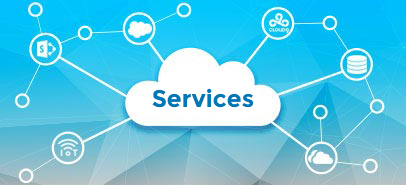





 Why is Expert Guidance Crucial for Optimization?
Why is Expert Guidance Crucial for Optimization?
